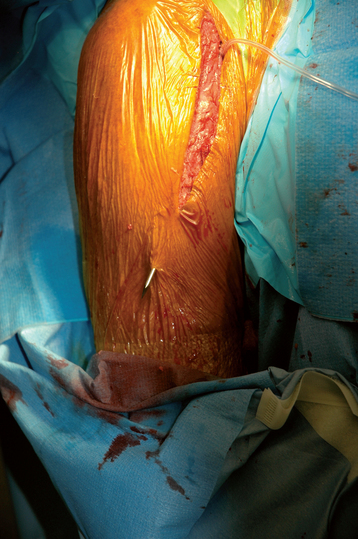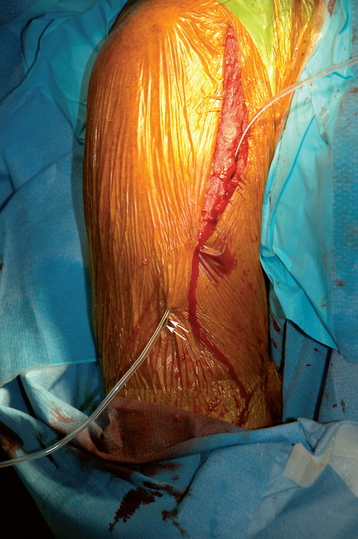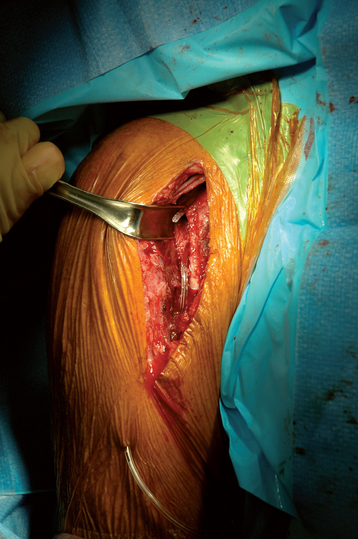CHAPTER 31 Wound Closure and Postoperative Orthosis
The final steps in the operative procedure are wound closure and placement of the postoperative orthosis. Wound closure after implantation of a reverse prosthesis is performed similar to cases of unconstrained shoulder arthroplasty. Because of the void created by lack of a rotator cuff, wound closure becomes more important after insertion of a reverse prosthesis than in cases of unconstrained arthroplasty because postoperative hematoma has been the most commonly reported complication after this procedure.1
WOUND CLOSURE TECHNIQUE
After reduction of the prosthesis and closure of the subscapularis, if present, the wound is irrigated with 800 mL of antibiotic-impregnated sterile saline (50,000 units bacitracin per liter sterile normal saline) via a bulb syringe. The wound is checked to ensure that adequate hemostasis has been obtained. The electrocautery is used as necessary to minimize any residual hemorrhage. A medium-size closed suction drain is placed to help prevent postoperative hematoma formation. The trocar of the drain is used to puncture the soft tissue from inside the wound, and the skin is exited approximately 2 cm distal to the distal extent of the skin incision (Fig. 31-1). The drain is pulled through the skin until the transverse mark on the drain tube reaches the level of the skin (Fig. 31-2). The trocar is removed from the drain with scissors, and the other end of the drain is cut with scissors so that the tip of the drain rests in the void left by the absent rotator cuff (Fig. 31-3). When trimming the proximal end of the drain, care is taken to cut the drain between holes to minimize the risk of drainage tube breakage during removal (Fig. 31-4).
Stay updated, free articles. Join our Telegram channel

Full access? Get Clinical Tree











